|
|
This midsize tablehooter employs a modified My Music Center sound engine and was likely a direct predecessor of the great Yongmei YM-2100. Unlike the latter it has only 10 preset sounds and rhythms, less polyphony and the cold digital sound is much noisier and a bit harsher. But it still has the programmable rhythm and switchable chord and bass timbres. Like with other Yongmei tablehooters, when new it stank badly of acrid chemicals and makes some polyphony flaws by omitted key matrix diodes.
 |
 |
The instruction manual is full of gibberish Engrish misspellings and contains partly wrong information. E.g. in claims there would be the features: "Chord/ Tremolo/ Portamento/ Infix/ Bass effect" although there is definitely neither portamento (glide tones) nor tremolo, and the meaning of "Infix" makes also no sense. Perhaps they meant with "Infix / Bass effect" on the box simply that during accompaniment the bass can only sound between chord notes instead of simultaneously to save polyphony, but in the manual is in the section "Automatic bass chord:" the confusing instruction: "C, when chord being played, press chord key or bass key to change the timbre, press infix key to improve timbre, or press normal key to cancel." Bizarre is that the 2 jacks on the back are labelled "speakers" and "phones" despite according to the manual the "phones" one should be a microphone jack. Like with other Yongmei/ Miles keyboards, also here the manual has schematics on its back, but unfortunately here the keys and buttons in the keyboard matrix are not labelled at all, thus it is no help to identify keyboard matrix eastereggs.
 |
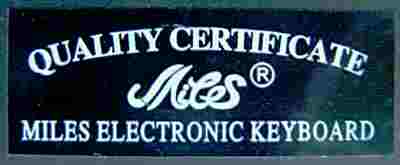 |
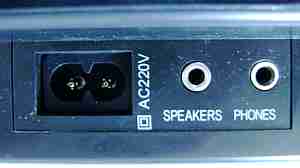 |
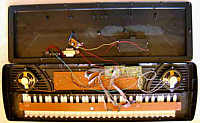 |
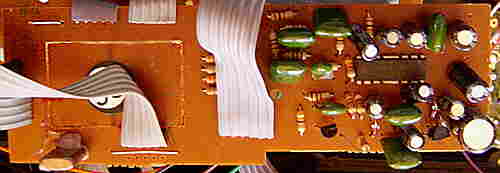
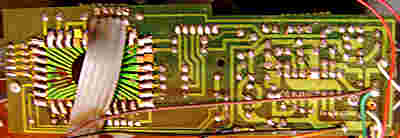 |
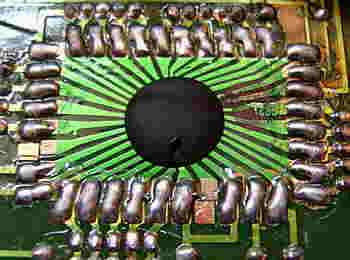
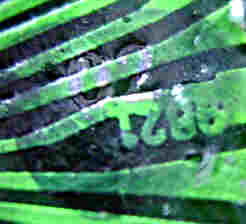 |
The main voice sound engine is based on My Music Center and sounds like a hissy lo-fi version of Yongmei YM-2100 (see there). Unlike the latter, the low resolution waveforms contain much digital noise (not zipper noise) that makes especially the bass range sound rough. Preset sounds with chorus halve the polyphony (i.e. 2 instead of 4 notes, or only monophonic play with chord or accompaniment). Like there, the sounds contain no vibrato. The "piano" reminds to an e-piano or e-bass. "organ" is a harsh digital wannabe metal pipe organ timbre that rather reminds to an oboe; "trumpet" is similar. "violin" is fairly ok; its bass range resembles a saxophone. "flute" sounds like a metal flute with hissy digital wind noise during attack (caused by fast zipper noise?); it also reminds to harshly overblown thin metal street organ rank. "space" is a slowly louder fading dull synth strings timbre with chorus and short sustain. "string" is brighter with chorus and faster attack; during sustain it turns duller because the brighter subvoice decays faster. The "guitar" sounds bright and slightly reminds to a clavinet or banjo. "bell" is the typical My Music Center sound with chorus and is rather a bright and cheesy synth harp. The "mandolin" rings with about 8Hz. The vibrato button adds a 6Hz vibrato and the sustain button 1 second long sustain to the main voice. Like with Yongmei YM-2100 they neither affect held notes nor chord or accompaniment.
The percussion is made from low resolution samples those sound thin and noisy. Especially the synth toms additionally sound distorted, which makes the "rhumba" and "bossanova" rhythm sound special. The drumpad buttons show instead of {base, snare, close hihat, open hihat, crash cymbal, cowbell, low synth tom, high synth tom} wrong icons, those often have a letter behind them: {base 1, hihat c, hihat, cowbells? h, snare? s, hihat s, tom h, tom m}. The custom drummer works and behaves like with Yongmei YM-2100 (see there, press "noll/ play" to enter a pause step) and like there it can be combined with the accompaniments of preset rhythms.
The chord voice of manual chord and accompaniment can switched between 3 preset sounds (a button cycles through them). The 1st resembles an e-piano, the 2nd a decaying synth string timbre with short sustain, the 3rd a bright and percussive picked string like a banjo. Also the bass voice of the accompaniment can be switches with a button between 3 preset sounds. The 1st resembles an e-piano or sonorous guitar, the 2nd a cello or low saxophone and the 3rd resembles a dull and sonorous tooting Hammond organ. Like with YM-2100, switching the chord preset sound or pressing accompaniment volume buttons does not affect held chord notes and the automatic accompaniments employ the same archaic pattern style (monophonic bass + chopped chord voice). Unfortunately there is no separate rhythm volume control, but you can program a blank user pattern if you only want the accompaniment. Switching rhythms re- starts the pattern immediately, but unlike YM-2100, here fill-in patterns don't mute accompaniment.
A very bizarre bug makes the (anyway primitive) sequencer unusable; when alternating notes in different octaves are recorded, some of the notes (typically those of higher octaves) are skipped; but unlike YM-2100 here they already don't sound during record and not only during playback, and the sequencer doesn't attempt to record polyphonic notes.
The demo melodies are nice but fairly short and employ a monophonic main voice with standard accompaniment.
The 8 demo melodies are:
A lot of other (often much bigger) keyboards were released in the Miles
MLS-4900A hardware class (all seen on eBay). These likely include
Yongmei YM-490F (case like Sankai
01504H, 54 fullsize keys including leftmost 5 fakes wired to drumpads,
6 drumpads - also released as Musical Centre Carsan 803 with the
fake keys to the right?) and Jia Yin JY-520B (54 fullsize keys including
leftmost 5 fakes wired to drumpads, grey case with 6 grey round drumpads
- also released as Jia Yin SY-520 ??). I first thought that also
Sankai SK-4901 (56 midsize keys including 7 fakes wired to drumpads),
big rectangular black case with odd shaped funky coloured buttons) would
be of this hardware class, but I saw on eBay that it has 10 demos
instead of 8 and a different rhythm/ sound set; a fullsize version of that
one was released as Sankai SK-510 (case like Yongmei YM-490F,
but the 5 fake keys are to the right). Someone had e-mailed me long time
ago that another fullsize variant was apparently released as Kids Musical
Fun (includes demo "Fly Me To The Moon", but 8 note polyphonic??, case
shape like the infamous Kamichi
transistor tooter, but in blue with red control panel - also a black and
silver version was made).
| removal of these screws voids warranty... | ||
 |
||
|
|